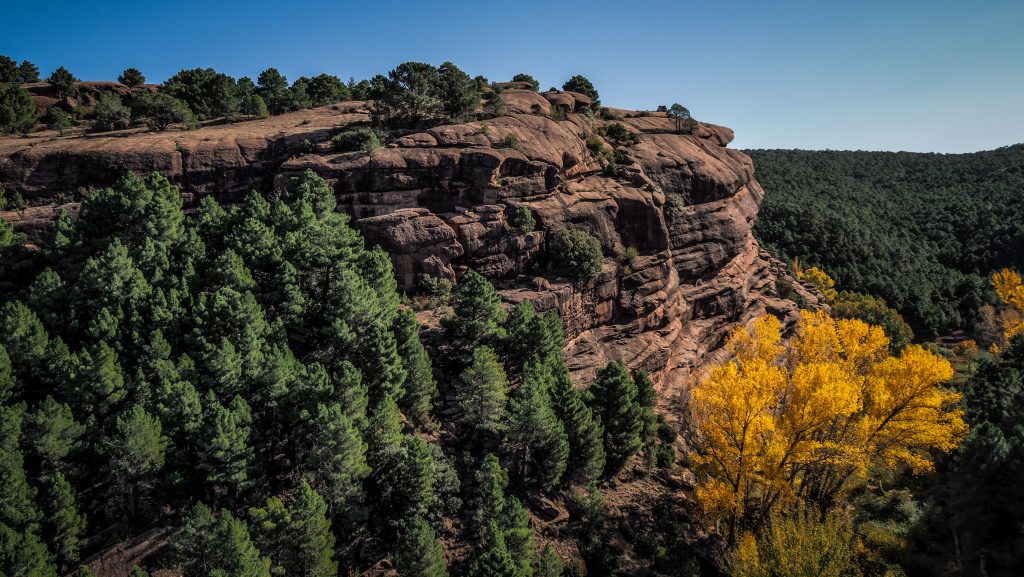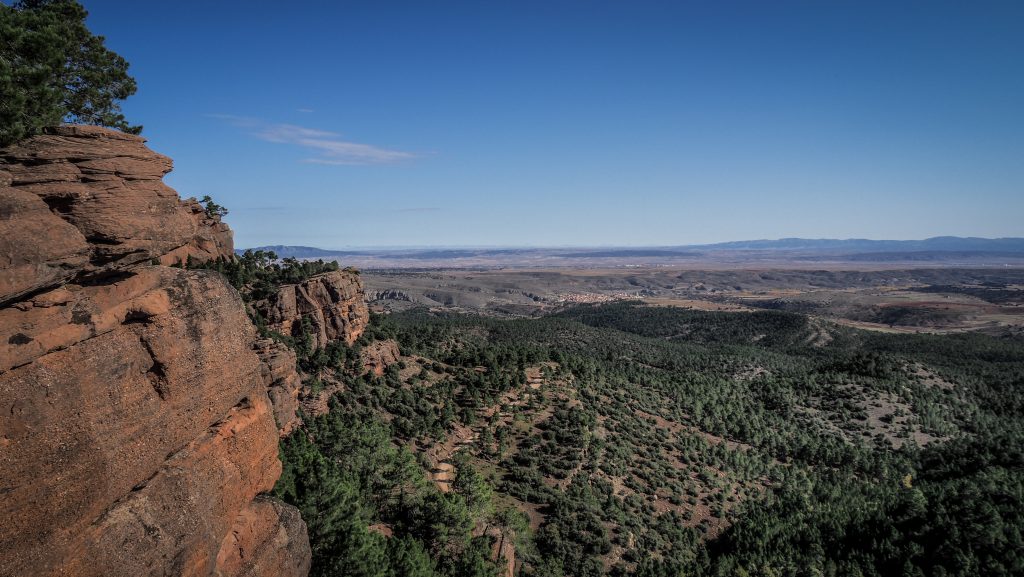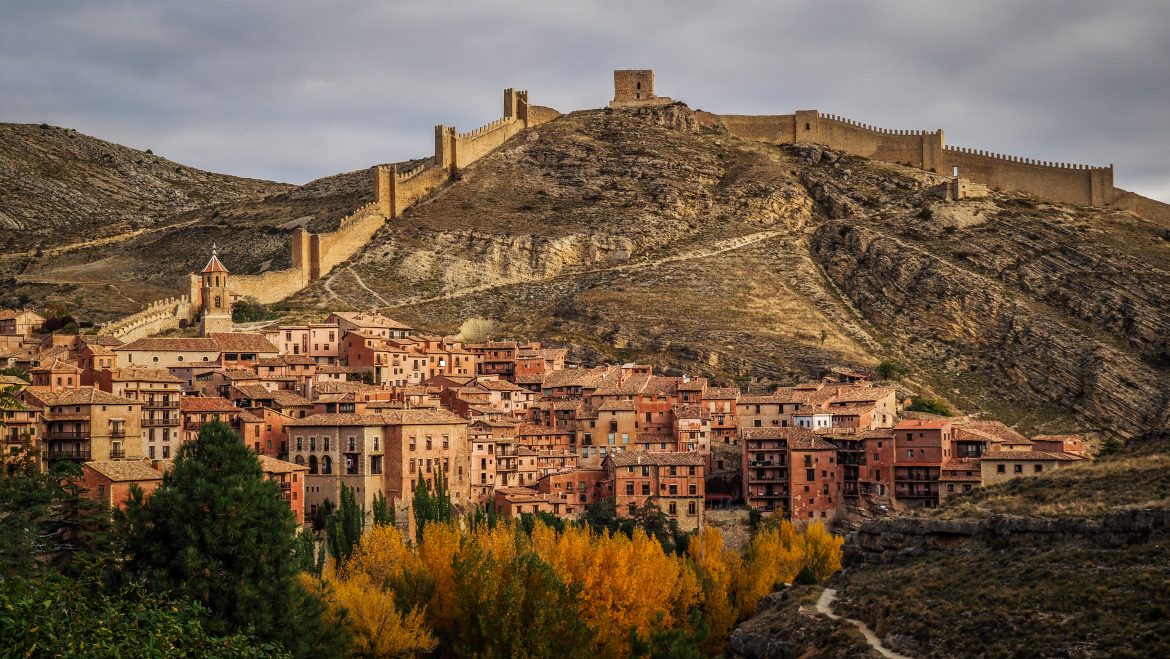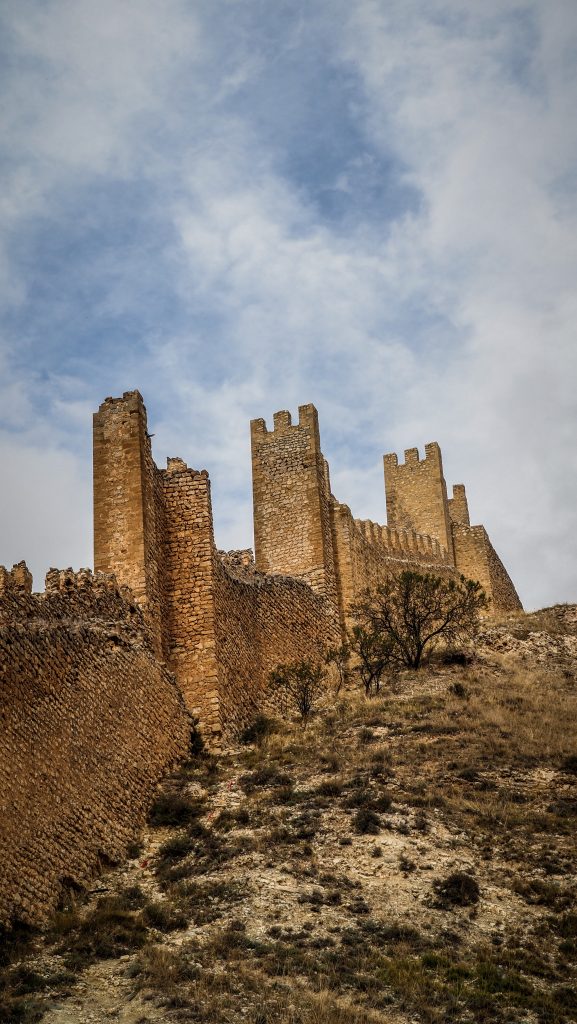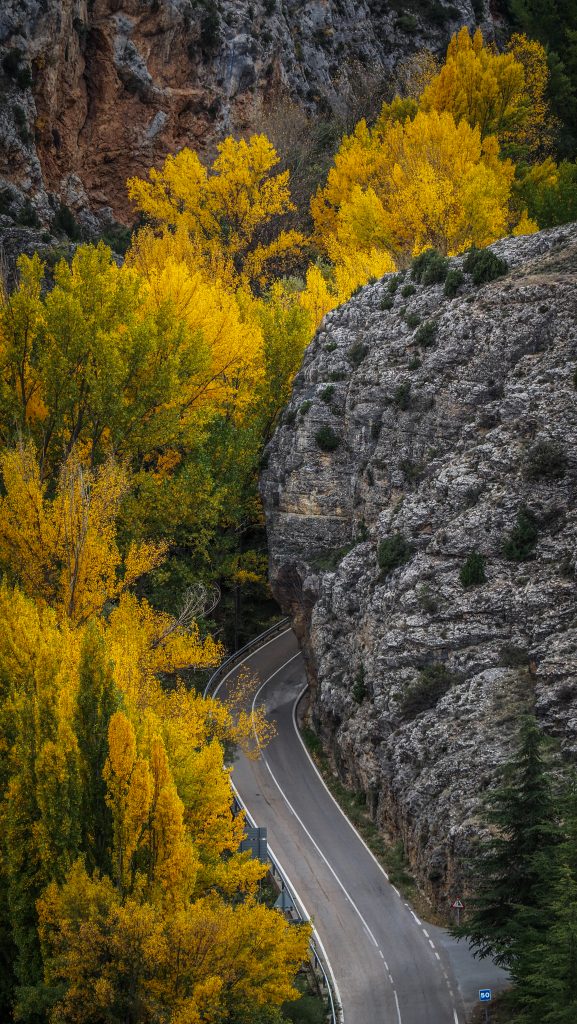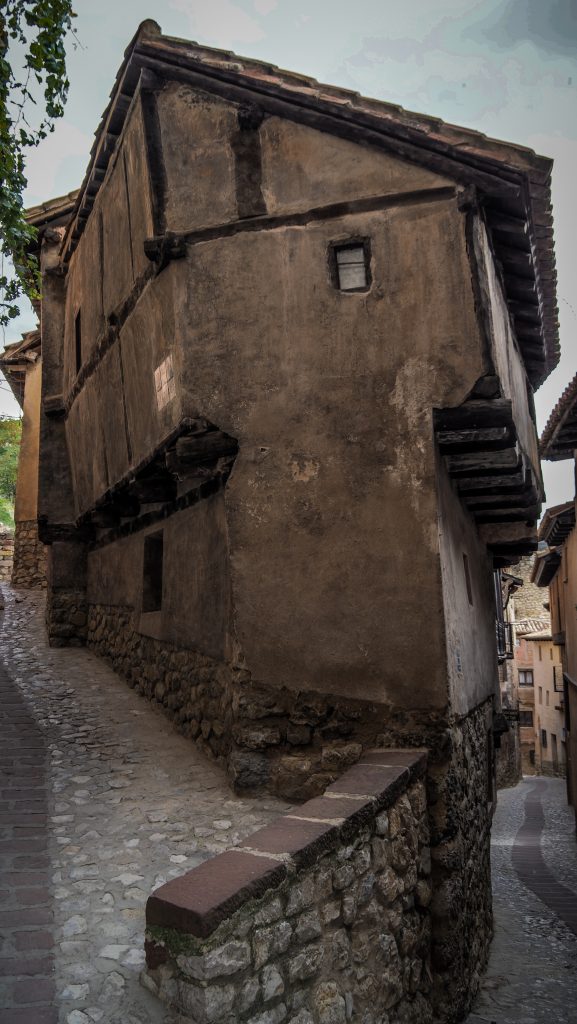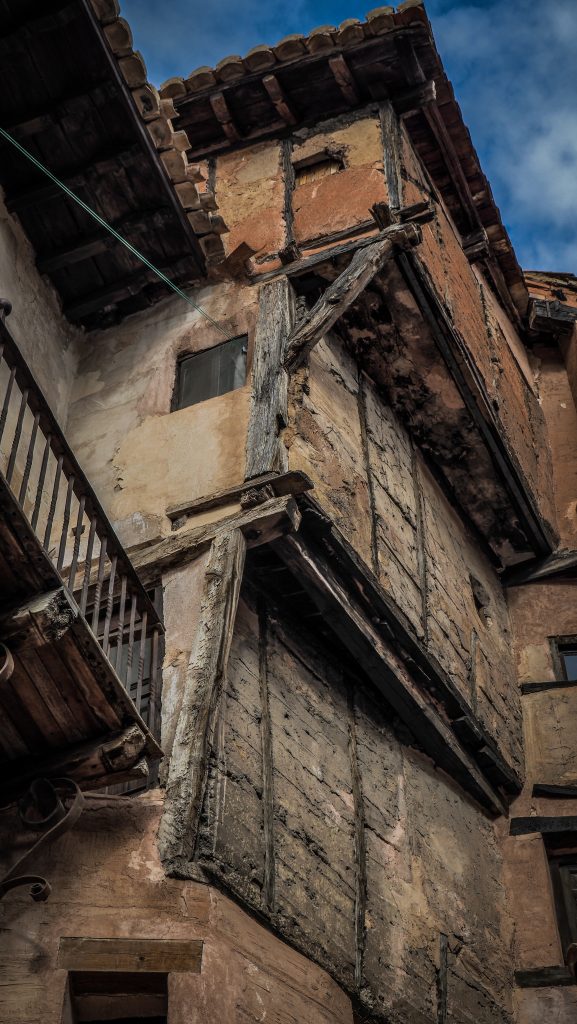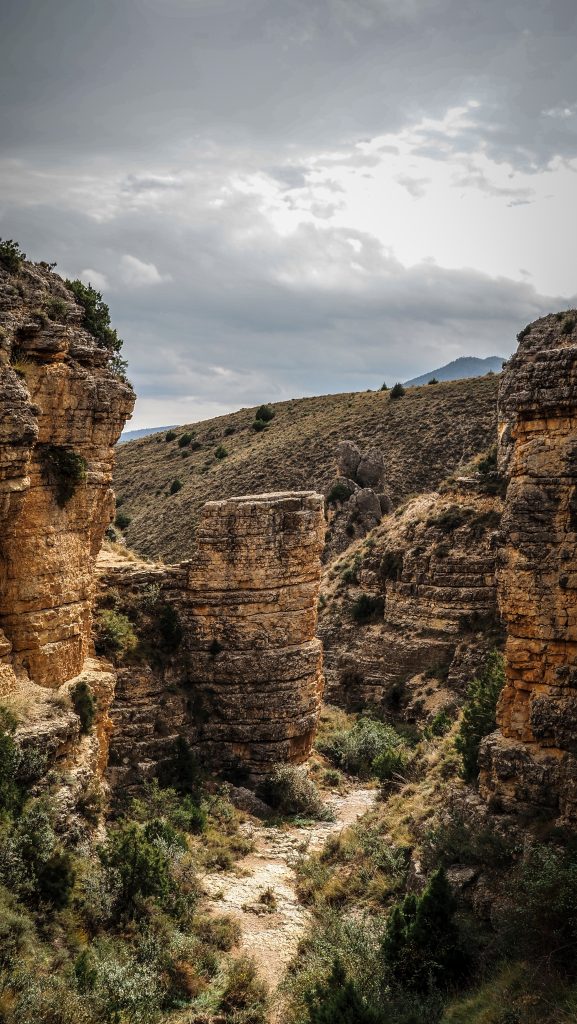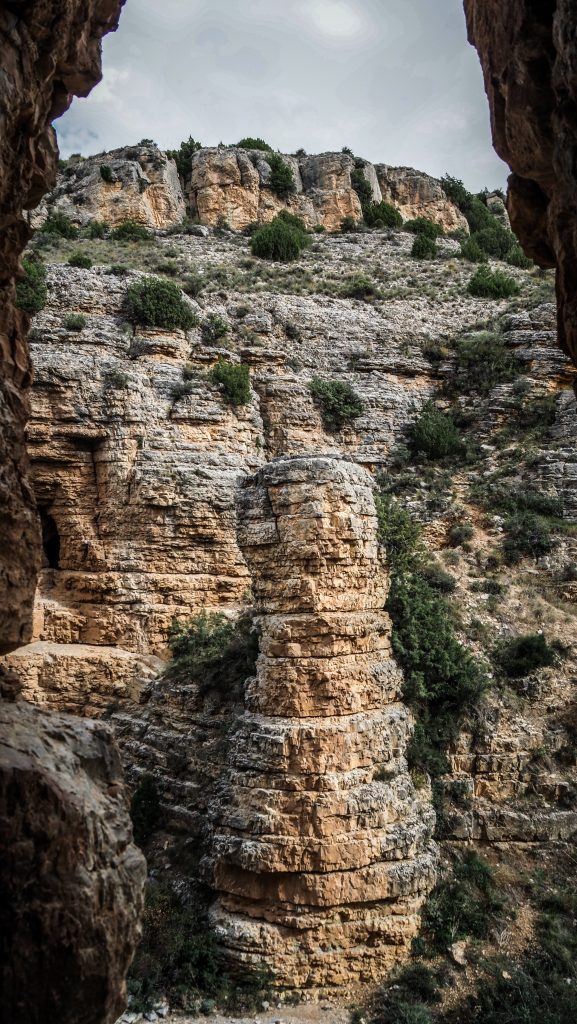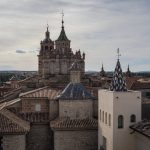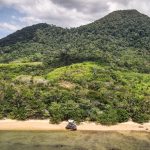Albarracín is a small town with just over a thousand inhabitants on the southern edge of Aragon. Similar to Teruel, which I described in the previous post, it totally stole my heart! Both towns are less than 40 kilometres away and can be easily visited one after another.
The history of the city dates back to ancient times when the Romans established one of their fortified camps here, called Lobetans. In the 1st century, they built an 18-kilometre aqueduct, which is one of the most impressive hydraulic systems in the Iberian Peninsula. In the 9th century, the city was conquered and occupied by Arabs, and then taken over by the Berber Dynasty of Banu Razin which established its independent taifat. In fact, it is believed that the present name of the city comes from the phrase: Al-Bani-Razin, which means Razin’s children.
The territory was taken by the Almoravids in 1104. From 1167 to 1300, Albarracín was an independent lordship known as the Sinyoría d’Albarrazín which was established after the partition of the Taifa of Albarracín under the control of Pedro Ruiz de Azagra. It was eventually conquered by Peter III of Aragon in 1284, and the ruling family, the House of Azagra was deposed. The last person to actually hold the title of Señor de Albarracín was Juan Núñez I de Lara, although his son, Juan Núñez II de Lara continued on as the pretender to the title until 1300 when the city and its lands were officially incorporated into the Kingdom of Aragon [wikipedia.com].
How long to stay?
I suggest staying at least 1 night in town, especially if you want to do some hikes in the area (and you definitely should). Ruins of the Roman Aqueduct, Paseo Fluvial or Sendero del Arrastradero with prehistoric rock paintings, are perfect examples.
Where to stay?
I can fully recommend Hotel Messon del Galo, located along the main street with two big paid parking sites close by. A single room with fast internet and a private bathroom cost me about 35 EUR (in October 2021).
Places worth seeing
City Walls (Murallas) – Admire a great panorama of the town and surrounding hills from Torre del Andador, the highest point of the walls. Technically, climbing the structure is forbidden and believe me, the views are great even from a bit lower level. It’s free to visit.

Castle (Castillo) – Built in the 9th century as an Islamic military post, today it can be visited only with guided tours during very limited opening hours which is a bit discouraging. Ask for more details and tickets at the information centre.
Catedral del Salvador – Roman Catholic church with a single nave, built between 1572 – 1600, on the remains of Romanesque temple from the 12th century. It can be only visited with a guided tour organized by Fundación Santa María.



Museo de Albarracin – Located in the old hospital of Albarracín from the 18th century. During the civil war, the building was used as a district prison and then transferred into the museum. It presents the history of Albarracín, both Islamic and Christian periods as well as the Modern and Contemporary periods in the form of various dioramas. Unfortunately, everything is in Spanish only.
Museo Diocesiano – Located in the old Episcopal Palace, just next to the cathedral. The museum presents a collection of religious art.
Museo de Juguetes – Visiting the Toys Museum could be a good idea, especially if you travel with kids. It’s a bit off the main tourists’ path, but in Albarracin, everything is within walking distance.
Casa de la Julianeta – The most emblematic building of the town and also the most photographed so if you want your perfect shot, come very early in the morning. It’s made of plaster and wood, which is the typical style of Albarracin.
Plaza Mayor Albarracín – Main square surrounded by wonderful buildings, including the 14th-century Town Hall.
Casa – Museo Albarracín – Noble house dating from the 17th century that once belonged to Pérez and Toyuela family. The interior is definitely worth visiting but again, only with a guided tour.
Dona Blanca Tower – It was built in the 13th century as part of the defensive system of Albarracin. There are three floors which sometimes host small photography exhibitions but most people visit for the viewpoint on top of it. Unfortunately, it was closed on the day of my visit.
Hiking trips in the area
Roman Aqueduct – One of the most important hydraulic systems in the Iberian Peninsula, built in the 1st century AD by the Romans. It’s almost 25 kilometres long and initially run next to the Guadalaviar river on the route Albarracin – Gea – Cella. There are several entry points along the road but one of the best ones is shortly after Gea de Albarracin, where you can admire magnificent walls with tunnels inside. It’s marked in Google Maps as Acueducto romano en Barranco de los Burros and can be easily accessed by car. So impressive what people were able to construct such a long time ago without modern tools! If you want to learn more about the history of this place, stop by Centro de Interpretacion in Gea de Albarracin.
Paseo Fluvial – Circular river walk following Rio Guadalaviar, starting in the Municipal Park. It’s about 2 km long and rated as easy.
Sendero del Arrastradero – The whole area of Pinares de Rodeno is famous for prehistoric rock paintings, such as livestock, horses or human figures. There are many interesting hikes to do but as I was running out of time, I decided to follow 2.5 km long Sendero del Arrastradero. Several sites with drawings protected by metal bars can be seen along the way or within a short detour. Sometimes it’s actually difficult to find anything on the walls. There is also a nice viewpoint to the landscape of Aragon.


